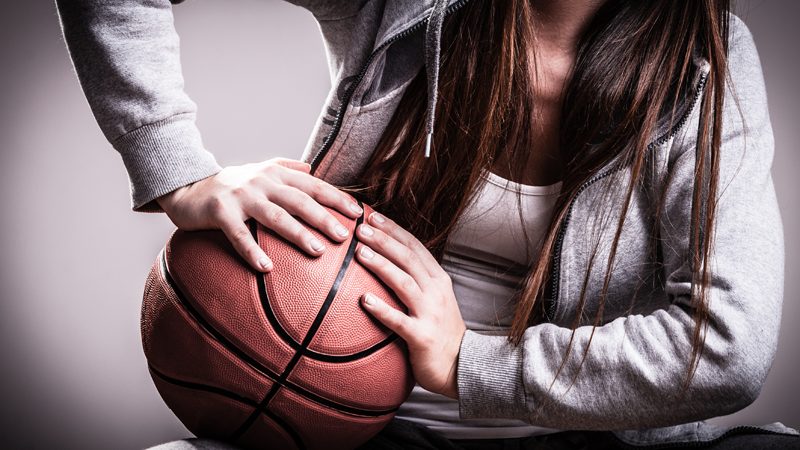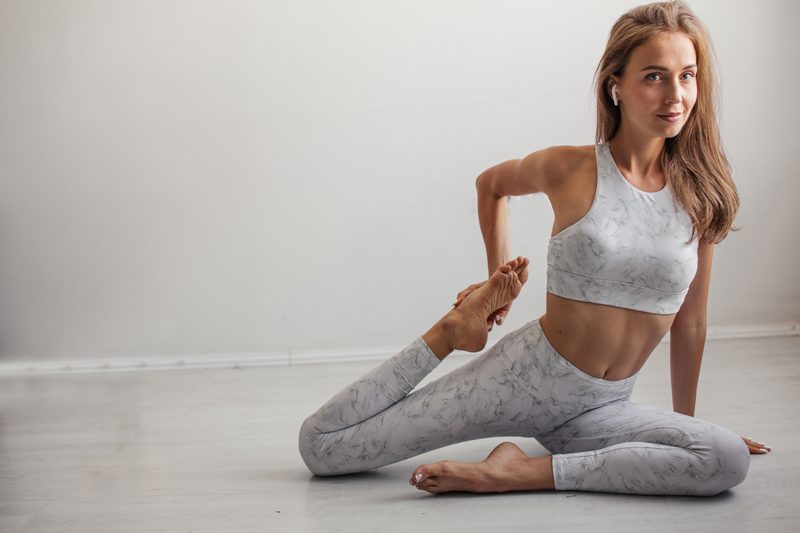
Yoga Poses to Wake You Up
6th December 2018
Yoga Poses to Help Heal Migraines
13th December 2018Yoga Poses for Basketball Players

If you’re a basketball player who hasn’t tried yoga yet, it’s time to spend some time away from the court and in the studio, instead. Helping to stretch, build, and strengthen the muscles, yoga is perfect for athletes looking to improve their game. Additionally, the postures can help you to warm up and prepare the muscles before you step onto the court. Starting the game with loose muscles can reduce injury, improve your balance, and reduce post-game discomfort. If this appeals to you, pick up a pair of yoga shorts and get cracking! In this article, we explore the top yoga poses for basketball players.
Plank Pose
As well as strengthening the core, Plank Pose can help to build strength in the wrists. Additionally, it helps to stretch out the wrist muscles before each game, decreasing the risk of injury and delayed onset muscle soreness. To practice the asana, begin on all fours. Next, tuck your toes under and lift your legs up off the mat. Slide your feet back until your body forms a straight line from your head to your feet. Finally, engage your abdominal muscles and draw your shoulder blades down and back. You are in Plank Pose. Keep your stomach muscles engaged to hold the asana for as long as possible.
Warrior II
Warrior II helps to strengthen the arms and improve balance while stretching out the shoulders and leg muscles. Additionally, it gives you some much needed time to focus on your breathing and calm the mind. To practice the asana, begin by standing tall. With your right leg, take a big step forward while keeping both your legs straight. Next, turn your left foot out 90 degrees and your right foot in 45 degrees. Finally, bend your right knee and stretch both arms out to the sides. You are in Warrior Two. Hold the asana for 1 minute before repeating on the other side.
Pigeon Pose
Involving high amounts of running and jumping, basketball can have an impact on your hips and lower back. Thankfully, Pigeon Pose can be used to minimise the damage caused. To practice the asana, stand tall on the mat with your feet together. Next, bend at the waist and lower your torso forward until you can touch your hands on the mat. Your body should now form a triangle. From this position, extend your right leg behind you. Bring your right knee to your right wrist and move your foot to touch your left wrist. At this state, your shin should be perpendicular to the front edge of your mat. You are in Pigeon Pose. Hold the asana for 30 seconds before switching sides.
Forward Bend
Forward Bend can be used to loosen and warm the hamstrings. For best results, use the posture both before and after the game. As the muscles tend to tighten after physical activity, Forward Bend can stretch the muscles to reduce the tension. To practice the asana, stand tall with your feet directly under your hips. Hinge at the waist and lower your upper body toward the floor. To minimise pressure on the lower back, bend your knees generously throughout the pose. Finally, take hold of your ankles and let your body hand naturally towards the mat. You are in Forward Fold. Hold the asana for 1 minute whilst breathing deeply. If you want to deepen the stretch, gently sway your torso from side to side.

Triangle Pose
Triangle Pose can be used to build lower leg and core strength. Additionally, the posture helps to lengthen the hamstrings and stretch out the chest. To practice the asana, begin standing tall with your feet apart. Bring your arms out to the sides until they’re in line with your shoulders. Turn your right foot out 90 degrees and your left foot in 45 degrees. Engaging your quadriceps, bend to the side over your right leg. For support, place your right hand on your ankle, shin, or knee. Finally, lift your left arm towards the ceiling and gaze at your fingertips. You are in Triangle Pose. Hold the asana for 30 seconds before repeating on the opposite side.
Boat Pose
Boat Pose can be used to strengthen the abdominal muscles and hips. With this in mind, the posture is ideal for basketball players to use regularly. To practice the asana, sit down on the floor with your legs extended. Next, place your hands on the mat just a little behind your hips, ensuring that your fingertips are pointing towards your feet. Press your palms firmly into the ground as you strengthen your arms. Keeping your back straight, gently lean back and lift your feet off the ground. Your shins should now be parallel to the floor. As you lift your chest, lengthen the front of your torso. Finally, extend both arms forward until they are in line with your shoulders. You are in Boat Pose. Hold the pose for 30 seconds whilst breathing deeply. For best results, draw your chin into your chest throughout the pose.
Dolphin Pose
Dolphin Pose is perfect for those looking to build strength in their upper arms. To practice the asana, begin on all fours. Keeping your knees directly beneath your hips, bring your forearms down to the mat. From this position, touch your palms together whilst keeping your forearms on the floor. Next, curl your toes under and lift your knees off the ground. Lengthen your tailbone and lift your bottom towards the ceiling. Your body should now form an upside down ‘V’ shape. If you’re a beginner, you may find it easier to keep your knees slightly bent. Pressing your forearms into the mat, engage your shoulder blades and draw them back. When you’re in this position, do not let your head hang aimlessly; instead, support it between your upper arms. You are in Dolphin Pose. Hold the asana for 30 seconds before lowering your knees back down to the mat.
In Summary
If you’re hoping to strengthen your muscles and reduce your risk of injury, practice the yoga poses for basketball players above. If you’re using yoga at home, remember to use a good quality yoga mat every time you practice.

